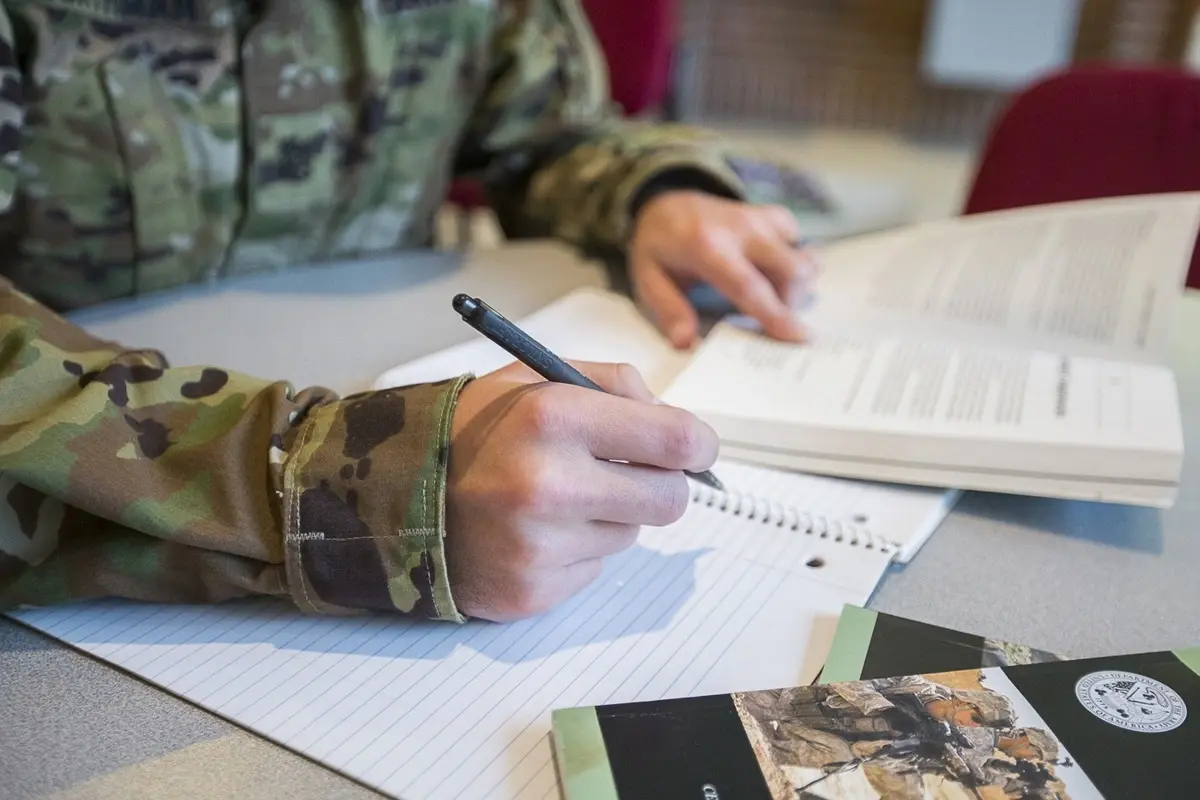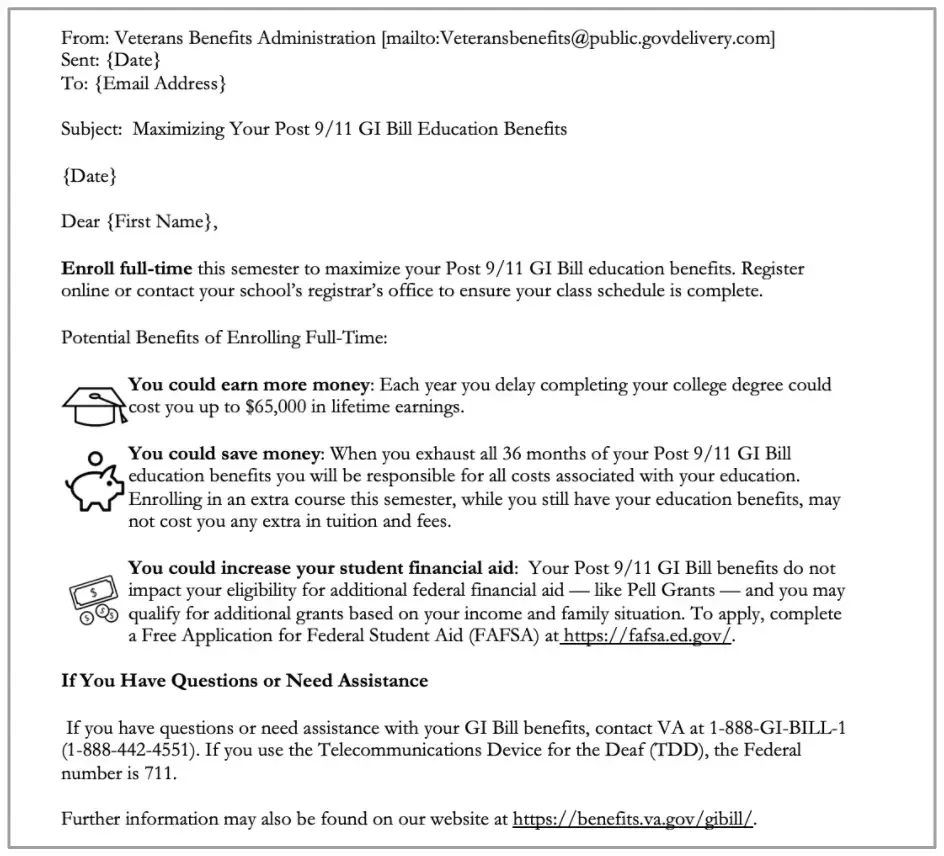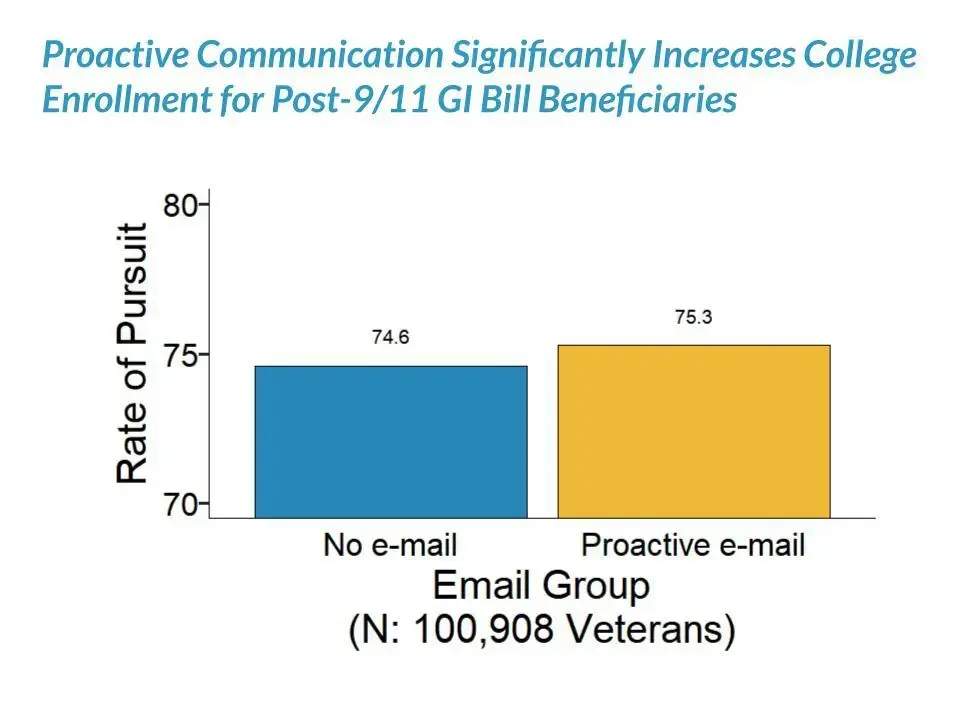Using proactive communication to increase college enrollment for post-9/11 GI Bill beneficiaries

U.S. Army Photo
What was the challenge?
The Post 9/11 GI Bill provides qualifying service members and Veterans with access to educational benefits to support their active-duty or post-service educational pursuits. PGIB benefits are month-based and the Veterans Experience Office has documented a number of challenges potential beneficiaries face when deciding on how to use their educational benefits. Additionally, VA Education Service has historically reported a beneficiary degree completion rate of approximately 20 percent. Ensuring veterans have access to their full range of educational benefits is a priority for the Department of Veterans Affairs.
What was the program change?
At no material cost and minimal staff time, we collaborated with VA Education Service to develop a proactive communication aimed at encouraging beneficiaries to enroll full-time and to increase their enrollment intensity. This communication also provided additional information on accessing financial aid and connected monetary impacts with delays in degree completion.
How did the evaluation work?
Actively enrolled degree-seeking, part-time, and non active duty beneficiaries were randomly assigned to one of two conditions: 1) no proactive communication; or 2) receive a proactive email encouraging an increased enrollment intensity. A total sample of 100,908 beneficiaries were randomized to the treatment condition (i.e. receiving an email). Emails were sent to 50,444 beneficiaries during the first week of July 2018.

What was the impact?
The results suggest that there was a small and statistically significant increase in the enrollment intensity for those receiving the proactive email, but no significant difference in likelihood of full-time enrollment. Specifically, the rate of pursuit (average enrollment) of those receiving the proactive communication was 0.753 compared to 0.746 for those who did not. This represents a 1% increase in relative enrollment.
This collaboration adds to the growing body of evidence on the positive effect of proactive communications to increase postsecondary enrollment intensity. Beneficiaries not enrolled full-time who were sent an email enrolled in more credits during the fall term; however, at a small scale.

Verify the upload date of our Analysis Plan on GitHub.
